728x90
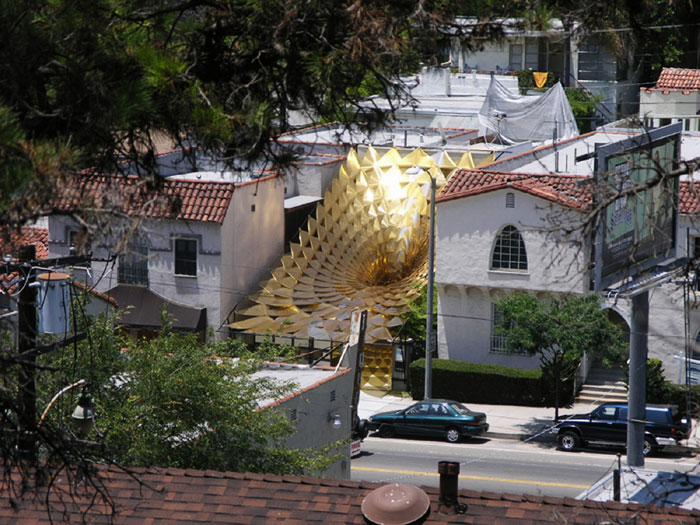
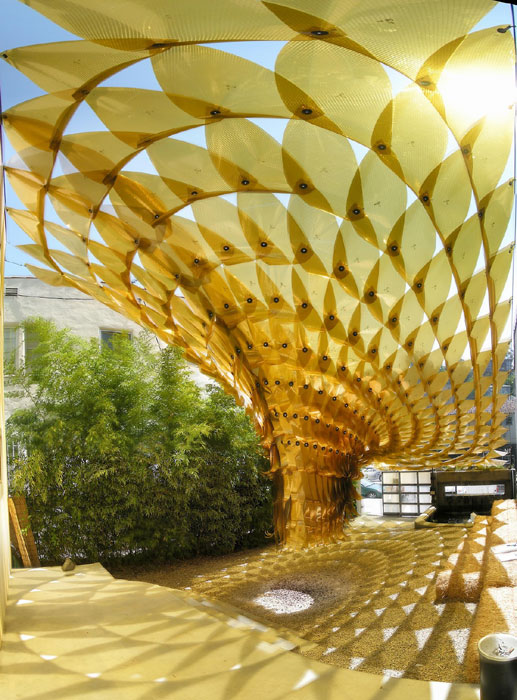
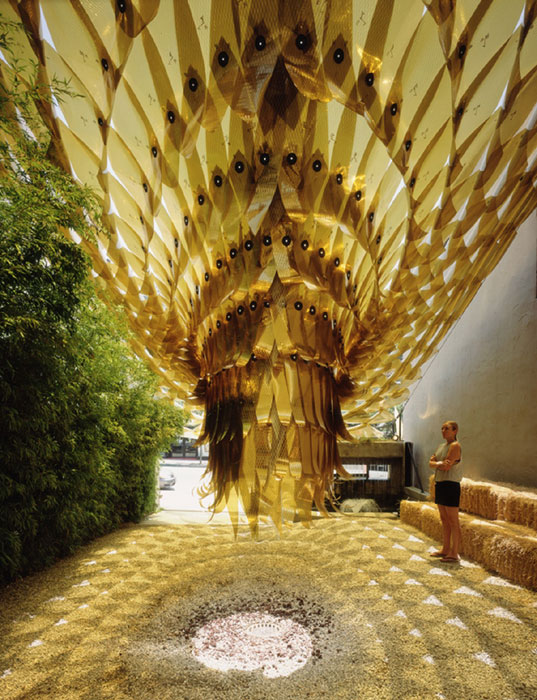
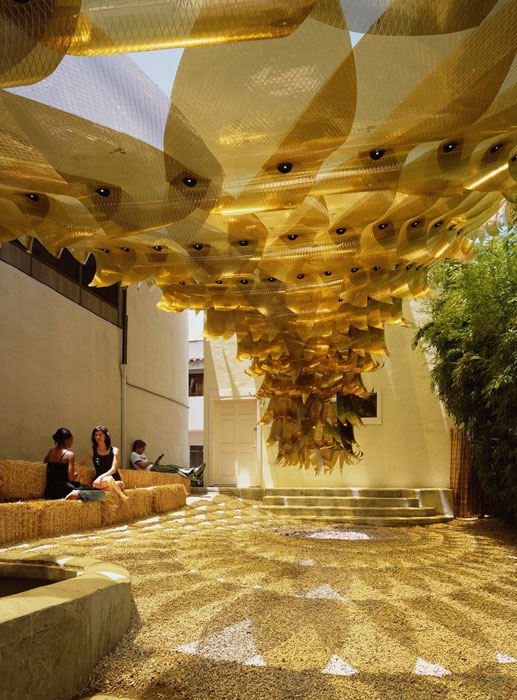
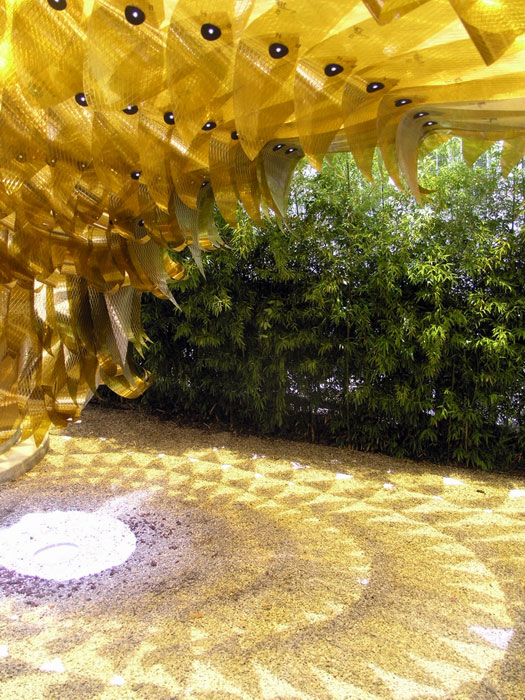
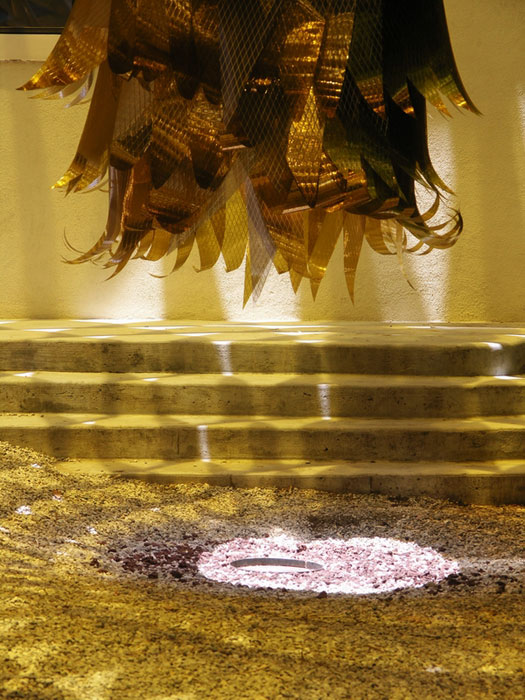
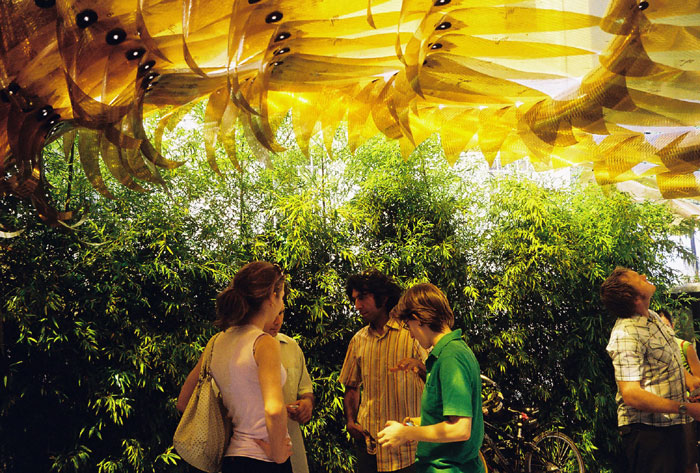
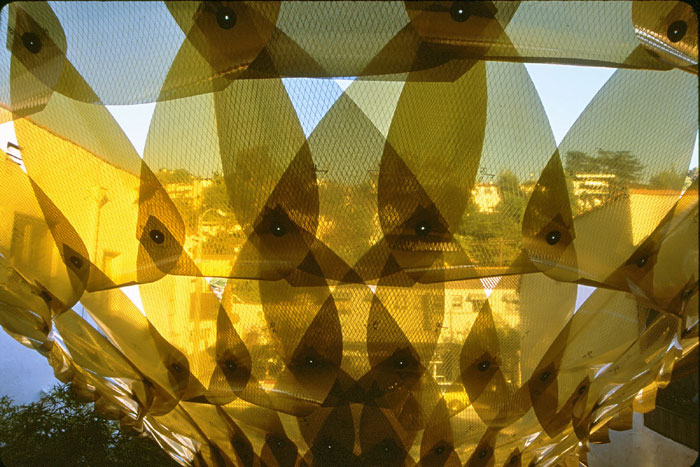
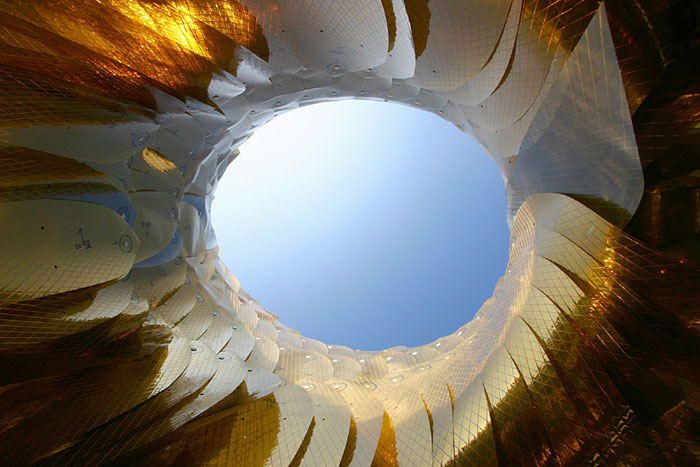
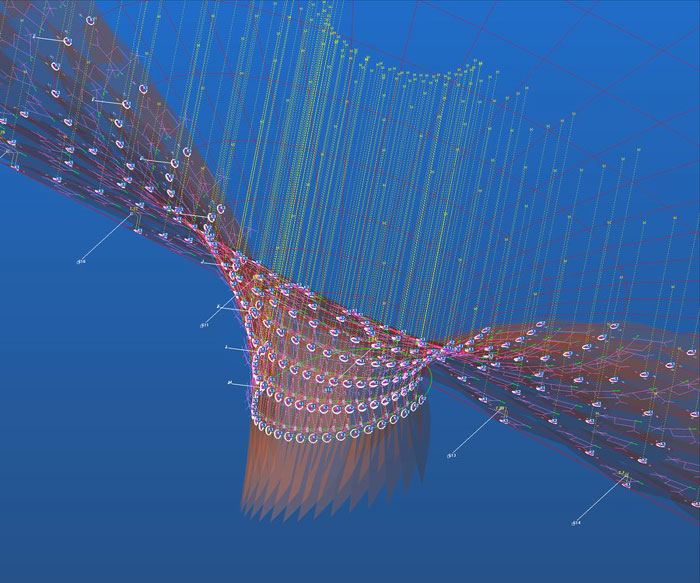
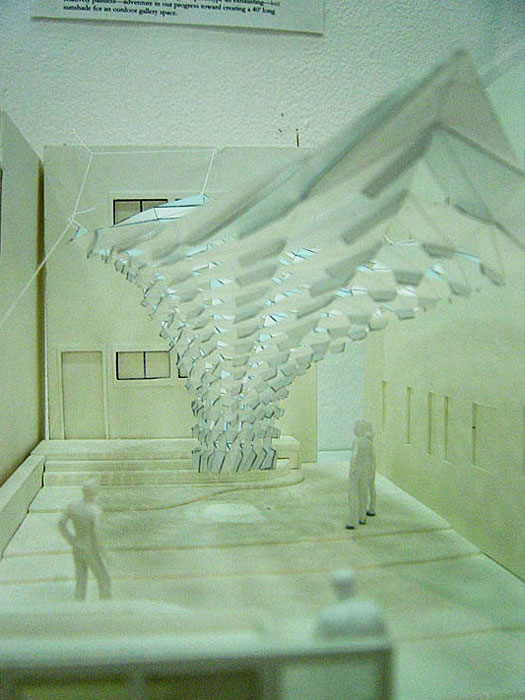
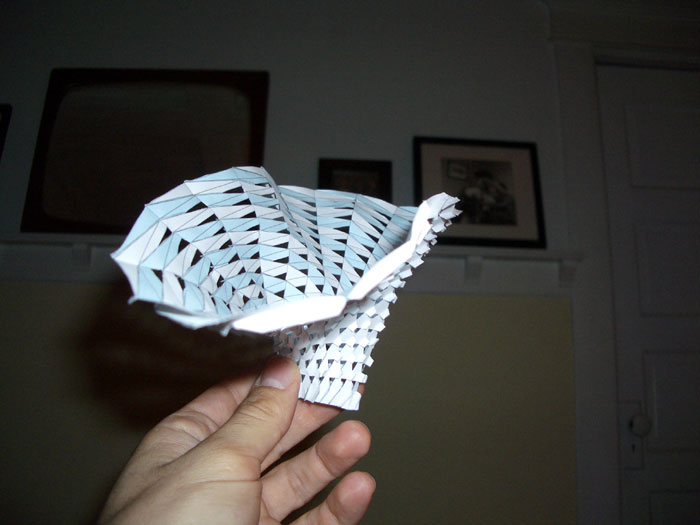
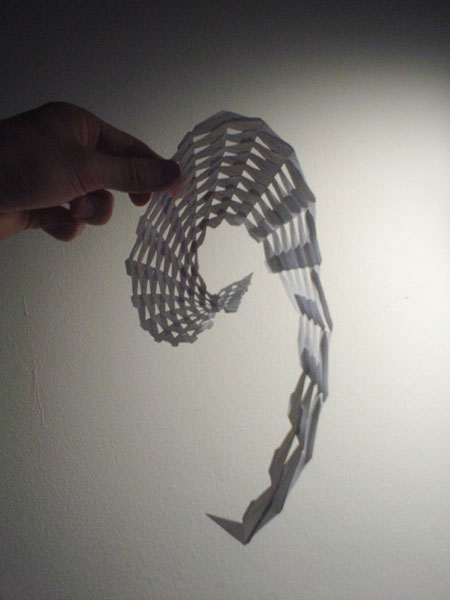
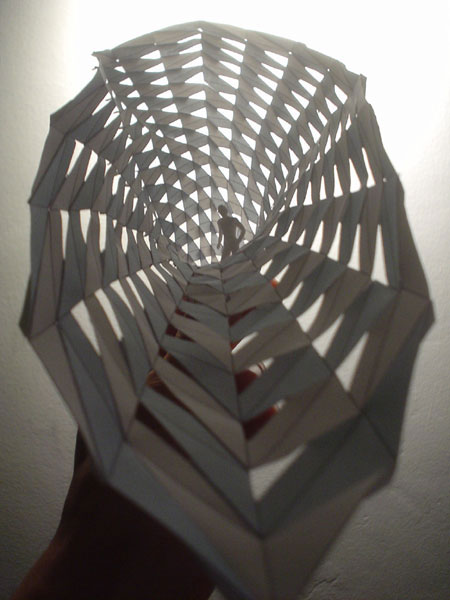
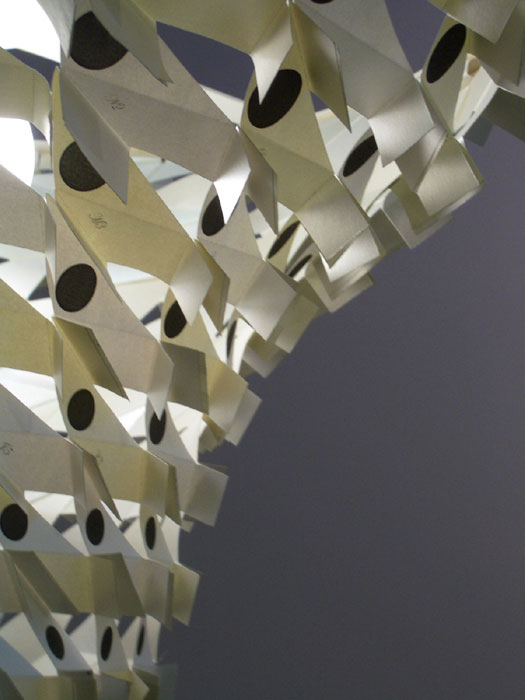
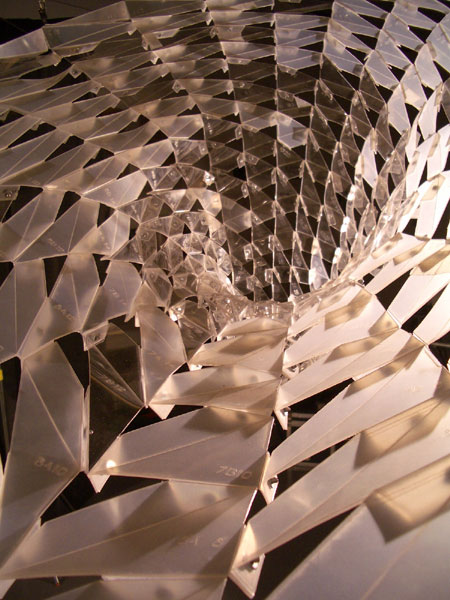
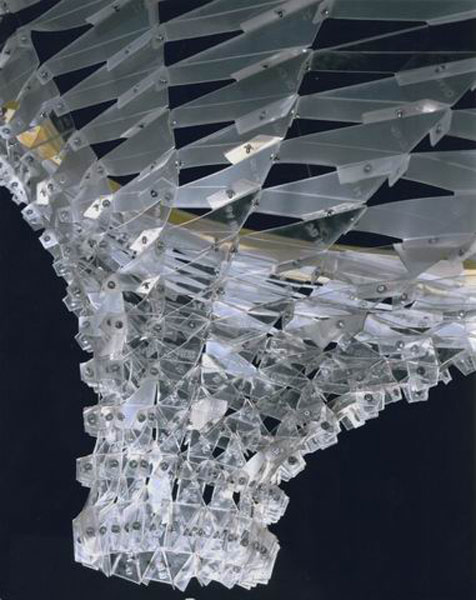
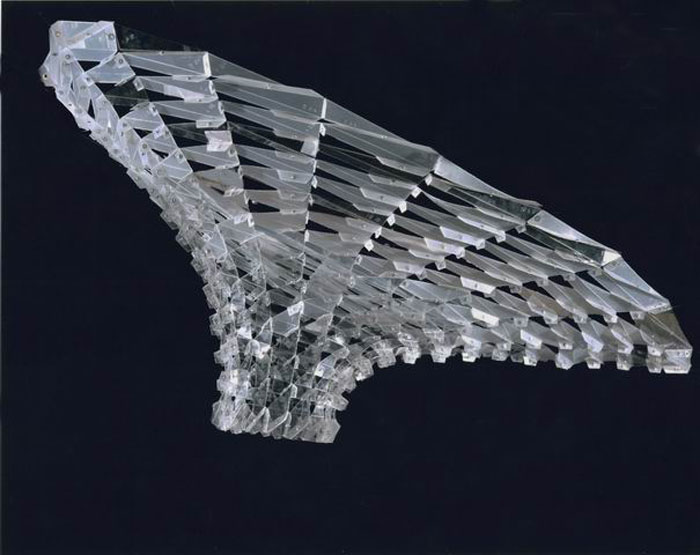
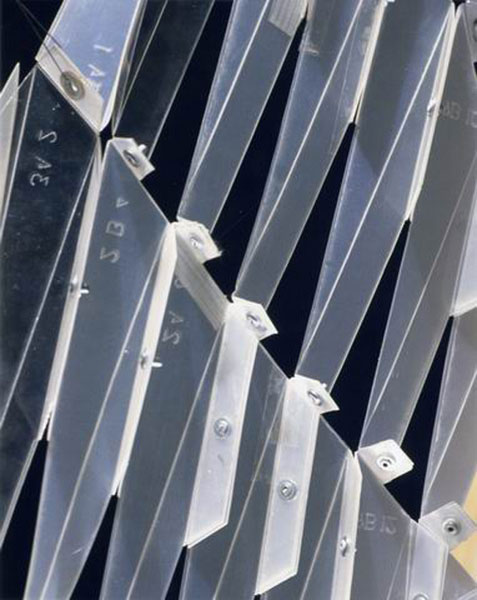
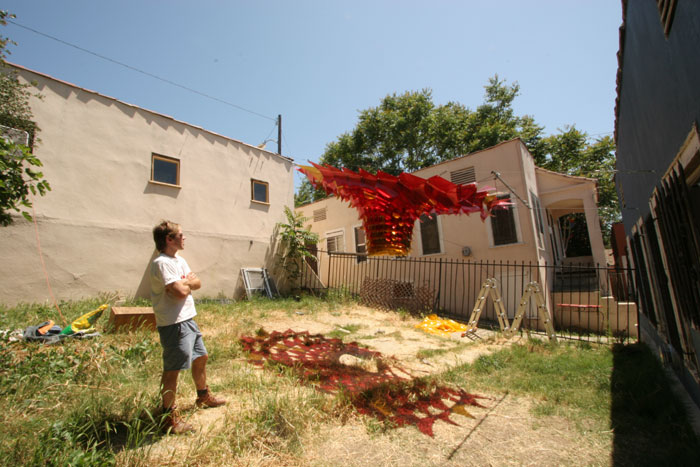
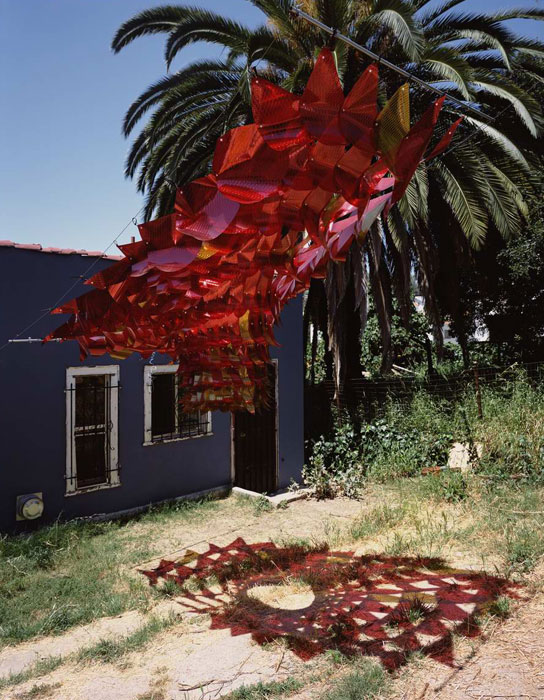
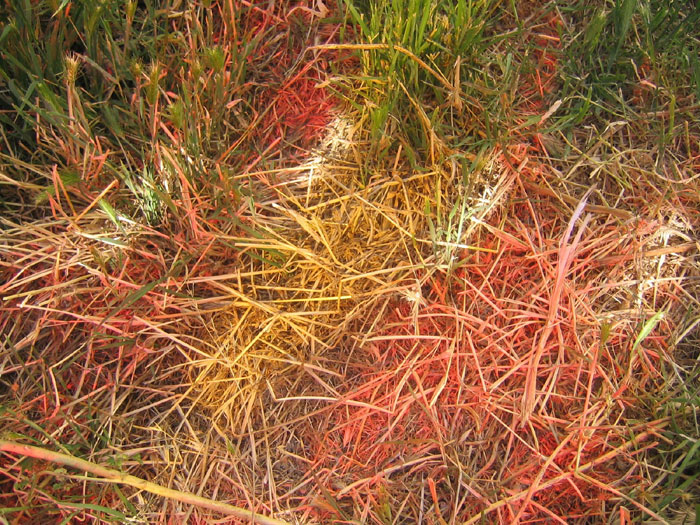
This vortex-shaped, temporary outdoor installation at Materials & Applications in Los Angeles warped the flow of space with a featherweight rendition of a celestial black hole. Hovering over M&A's courtyard, Maximilian's Schell was a spectacle the size of an apartment building constructed in tinted Mylar resembling stained glass. The piece functioned as a shade structure, swirling overhead for the entire summer of 2005. The interior of this immersive experimental installation created a beckoning outdoor room for social interaction and contemplation by changing the space, color, and sound of the M&A courtyard gallery. During the day as the sun passed overhead, the canopy cast colored fractal light patterns onto the ground. When standing in the center or "singularity" of the piece and gazing upward, the visitor could see only infinite sky. In the evening when viewed from the exterior, the vortex glowed warmly while both obscuring and allowing glimpses of the building behind it. The assembly paid homage to a character played by actor Maximilian Schell in Disney Studio's forgotten sci-fi adventure The Black Hole. Dr. Reinhardt is a visionary tyrant on a monomaniacal quest to harness the "power of the vortex" and possess "the great truth of the unknown."
The project required more than a year of development and involved several prototypes, though actual fabrication took only two weeks. The result was an installation that functioned as not only architecture and sculpture but as a "made-to-order" product through a unified manufacturing strategy. The designers achieved their aesthetic effects by manipulating Melanin reinforced with bundled Nylon and Kevlar Fibercon a computer-controlled (CNC) cutting machine. Simultaneously reflective and transparent, the amber-colored film offered UV-resistance through a laminated golden metallic finish. The result was neither a tent-type membrane nor a cable net structure in the manner of Frei Otto, but a unique tensile matrix comprised of 504 different instances of a parametric component or "petal," each cut and labeled using the CNC system. Every petal connected to its neighbors at three points using clear polycarbonate rivets to form the overall shape of a vortex. As though warped by the gravitational force of a black hole, the petals continually changed scale and proportion as they approached the singularity of the piece.
An integration of structure and skin, the vortex behaved as a "minimal surface": prestressed, always in tension, yet definable mathematically. Its lineage is in the soap film surfaces modeled by Otto in the 1950s and '60s; a process now typically accomplished using software that performs "finite element" calculations. After receiving hand sketches and computer models made by the designers, a structural engineer digitally crafted and refined the minimal surface model. He quickly and precisely manipulated it during the "form-finding" process while accounting for the distorting effects of gravity and enabling the finished vortex-shaped canopy to be in tension everywhere across its top surface. This gave it a pure and smooth appearance, especially when viewed from the exterior. Seen from the interior, the piece resembled an enormous transparent flower with its petals lightly draping and curling downward with gravity.
그리드형
'Pavilion&Installation' 카테고리의 다른 글
| [ synn architekten ] Schloss Orth (0) | 2010.04.21 |
|---|---|
| [ Anish Kapoor ] ArcelorMittal Orbit (0) | 2010.04.20 |
| [ Tonkin Liu ] Future Flower (0) | 2010.04.13 |
| [students of Architecture & Design, Aalborg University] The NoRA structure design (0) | 2010.04.13 |
| [ Sami Rintala ] NICE BOX (0) | 2010.04.12 |